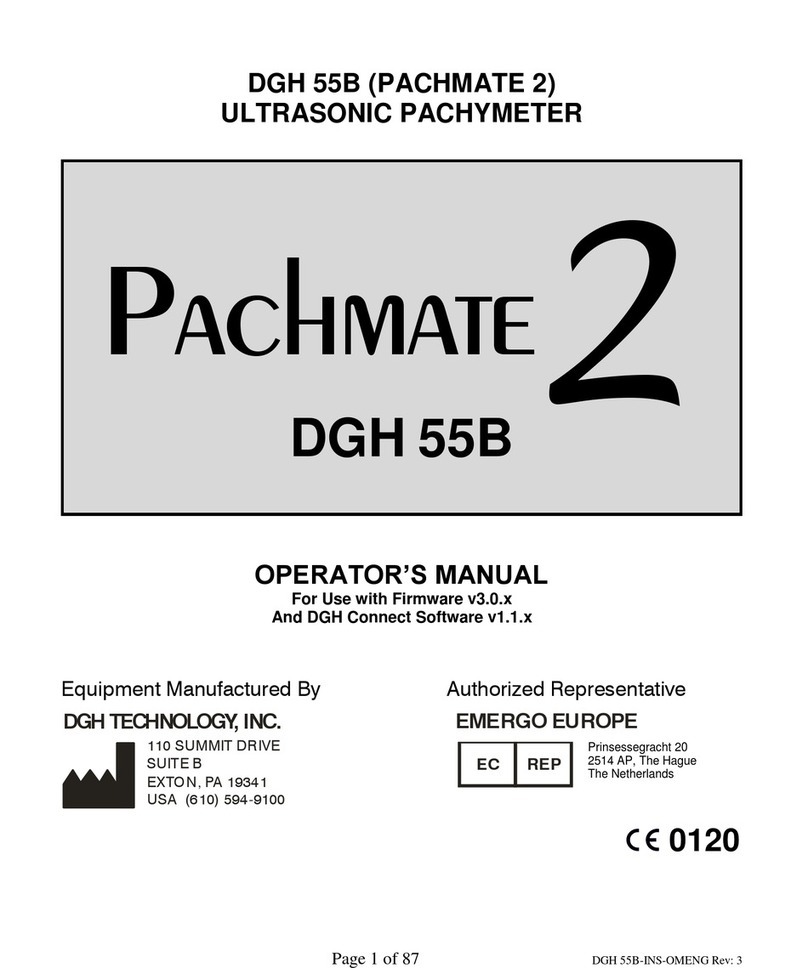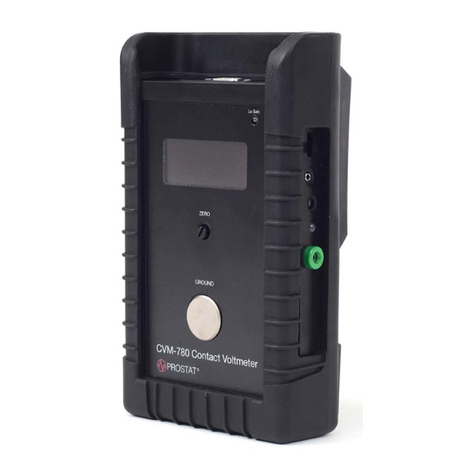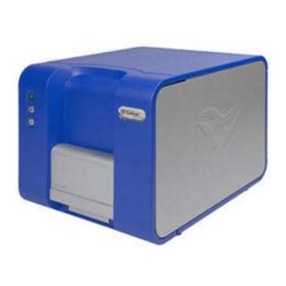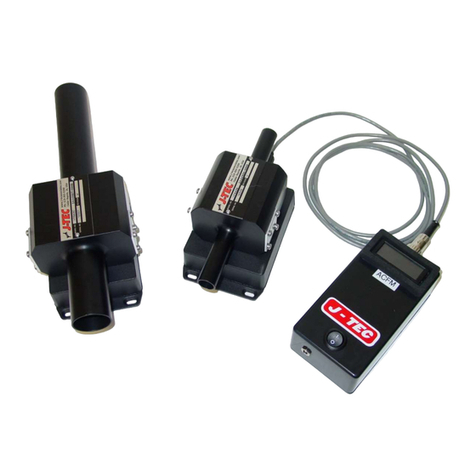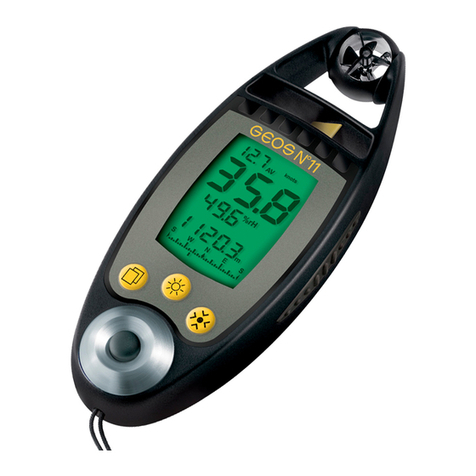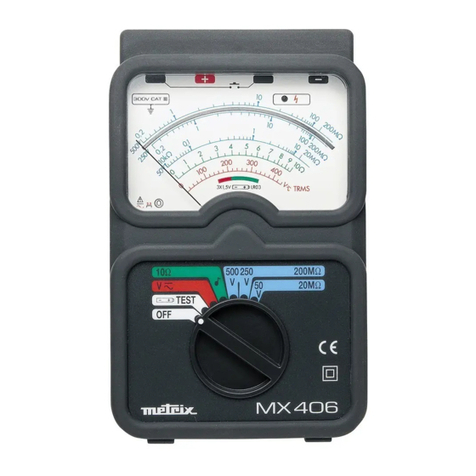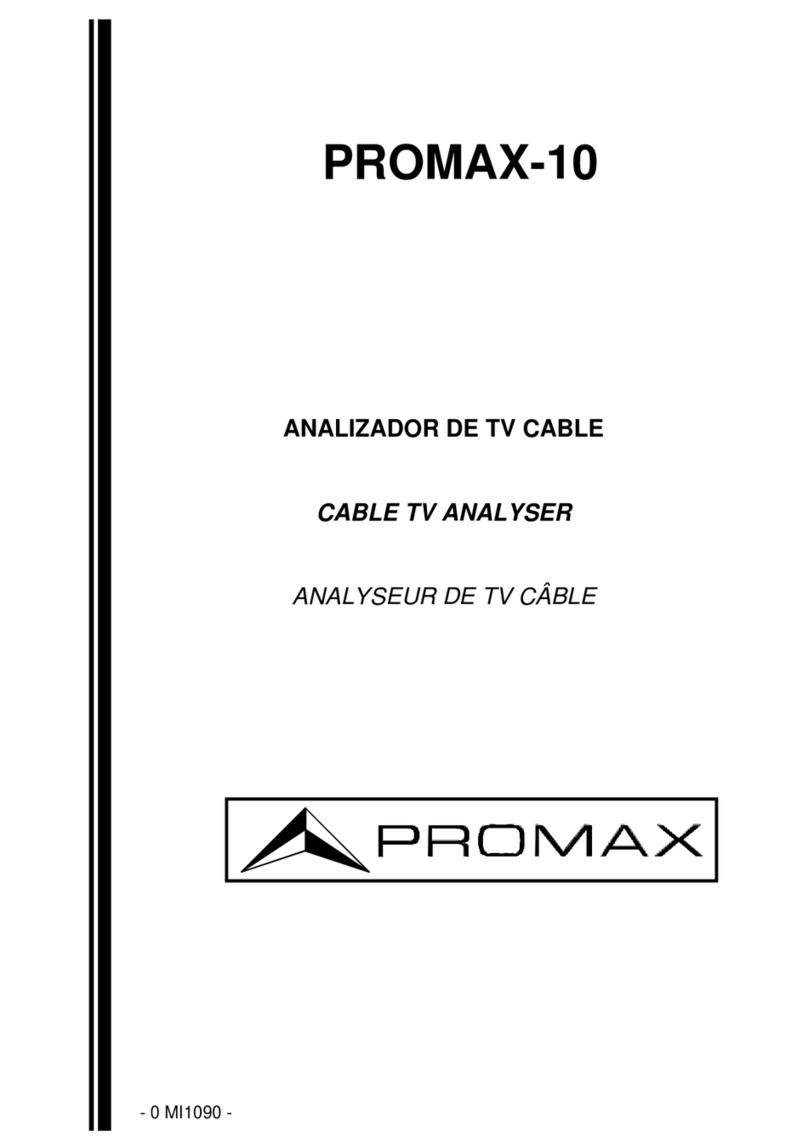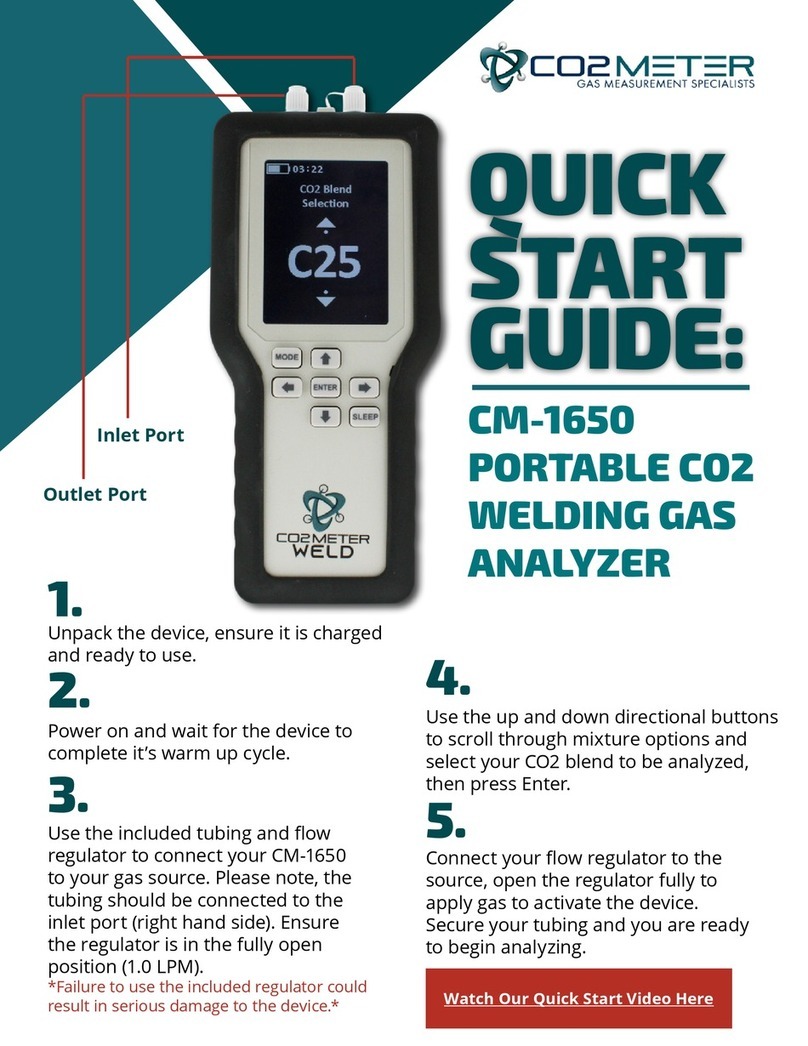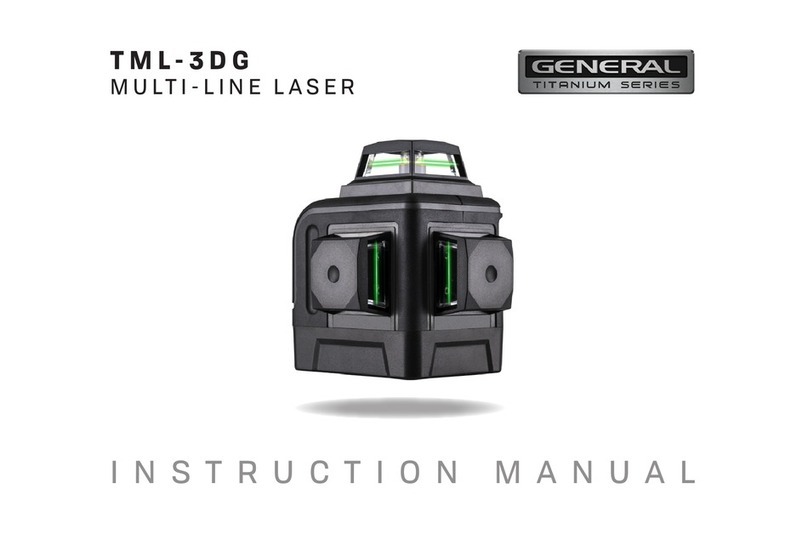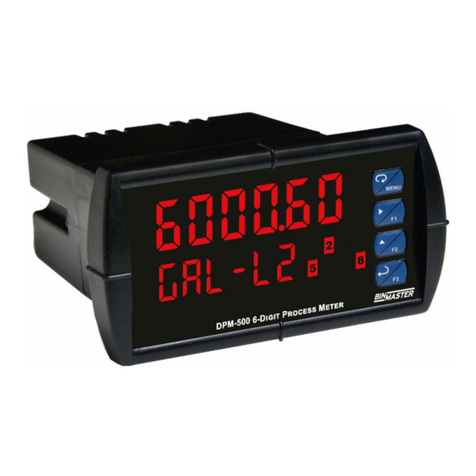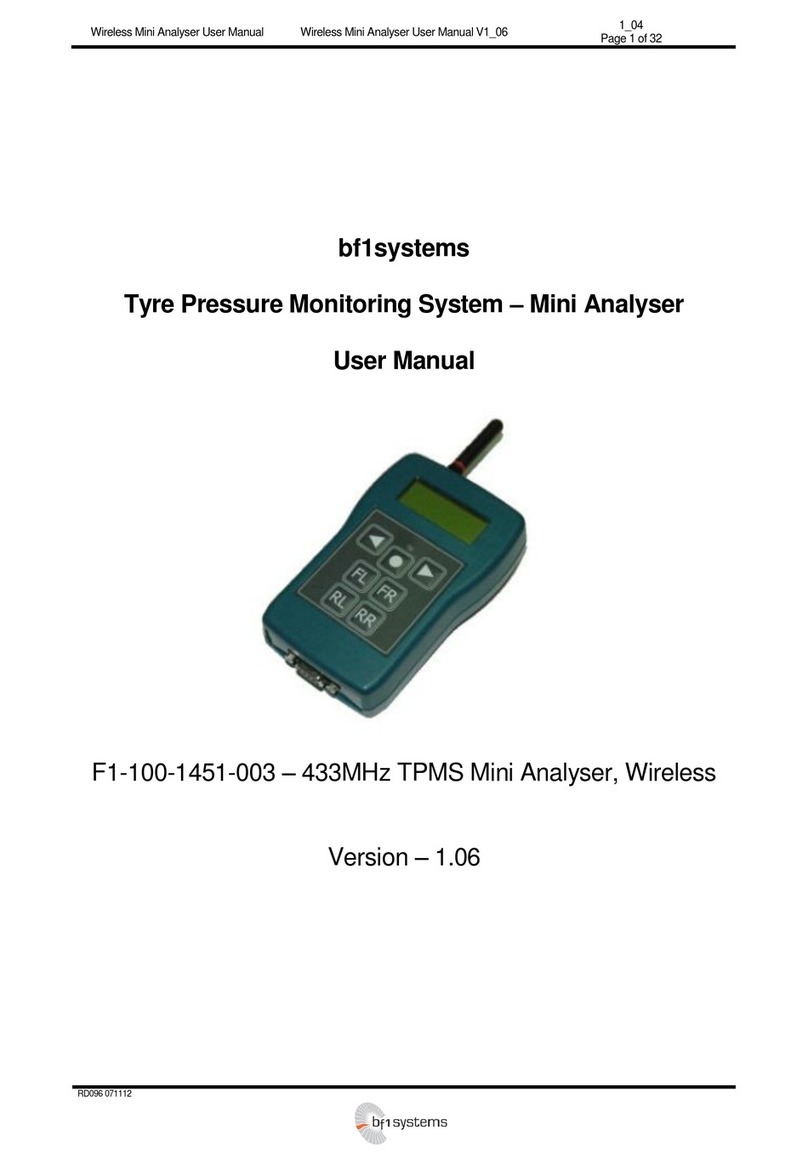DGH Pachette 2 User manual

TECHNOLOGY, INC.
DGH 550 (PACHETTE 2)
ULTRASONIC PACHYMETER
OPERATOR’S MANUAL
SYS.PA52 REV. 06/2003
DGH Technology, Inc. Sales: (800) 722-3883
110 Summit Drive; Suite B www.pachymeter.com Phone: (610) 594-9100
Exton, PA 19341 www.dghkoi.com Fax: (610) 594-0390


i
TABLE OF CONTENTS
I. INTRODUCTION.........................................................................................................................................1
II. FEATURES ...................................................................................................................................................2
III. GENERAL DESCRIPTION ........................................................................................................................3
IV. POWER-UP SEQUENCE............................................................................................................................7
V. CONFIGURING THE PACHETTE 2........................................................................................................8
VI. OBTAINING PACHYMETRY MEASUREMENTS ..............................................................................12
VII. PROBE QUALITY .....................................................................................................................................14
VIII. VERIFYING PACHETTE 2 CALIBRATION ........................................................................................15
IX. OPTIONAL FEATURES FOR THE PACHETTE 2...............................................................................16
IX.A. Mapping Mode Option.....................................................................................................................16
IX.B. FLAP Option....................................................................................................................................20
IX.C. Printer Interface Option....................................................................................................................20
IX.D. Data Transfer Interface Option.........................................................................................................24
IX.E. IrDA Interface Option......................................................................................................................26
X. CARE AND MAINTENANCE..................................................................................................................27
X.A. Cleaning Instructions........................................................................................................................27
X.B. Transport and Storage Conditions....................................................................................................27
X.C. Operating Conditions .......................................................................................................................27
X.D. Warranty...........................................................................................................................................28
X.E. Service..............................................................................................................................................28
XI. IMPORTANT NOTES ...............................................................................................................................30
XI.A. Prescription Device ..........................................................................................................................30
XI.B. Tissue Exposure To Ultrasound Energy...........................................................................................30
XI.C. Ultrasonic Intensities........................................................................................................................30
XI.D. Biometric Measurement Capabilities ...............................................................................................31
XI.E. Classification....................................................................................................................................31
XI.F. EMI / EMC Compliance (CE Units Only) .......................................................................................32
XII. APPENDIX A RS232C HARDWARE INTERFACE...........................................................34
XIII. APPENDIX B DATA TRANSFER FORMAT......................................................................37

ii
LIST OF FIGURES
Figure III-A DGH 550 Front Panel. ............................................................................................................................3
Figure III-B DGH 550 Back Panel...............................................................................................................................5
Figure III-C Electronic CalBox....................................................................................................................................6
Figure XII-A Wiring diagram for the SII DPU-414 printer interface cable..............................................................36
Figure XII-B Wiring diagram for a typical PC interface cable.................................................................................36
Figure XIII-A Format of data stream sent by Pachette 2. .........................................................................................37

1
I. INTRODUCTION
Ultrasonic Pachymetry is an integral part of refractive corneal surgery as well as
certain screening procedures that are a function of corneal thickness. The DGH 550
(Pachette 2) is an ultrasonic pachymeter that uses echo spike techniques to measure the
thickness of the cornea. This is the recommended method for obtaining corneal
thickness measurements because it offers the following advantages:
• Reproducibility
• High accuracy
• Ability to take measurements anywhere on the cornea
• Measurements are not dependent upon patient fixation
• Ease of use
The corneal thickness measurement may then be used in many different ways
including: Lasik and glaucoma screening, Lasik flap measurement, corneal edema
check for extended wear contact lens patients, and pre-operative data for intrastromal
ring implantation and radial/arcuate keratotomy.
The Pachette 2 was designed to provide a means of obtaining fast, accurate, corneal
thickness measurements with an instrument that is simple to use, economical, and ultra-
portable. We invite you to read this manual carefully to discover how quickly and
easily the Pachette 2 can be integrated into your practice.

2
II. FEATURES
The Pachette 2 is manufactured with high quality components that are designed and
built using the latest technological concepts. The result is an advanced and powerful
pachymeter that offers practicality and reliability. The following features are just a
sample of the characteristics and capabilities of the Pachette 2.
Standard Features
• Simple to use. Turn on power and the Pachette 2 is ready to take measurements.
• Automatic measurement mode for operation without a foot switch.
• Rapidly obtains and stores up to 50 measurements at a single location.
• Displays the current measurement, the average, and the standard deviation of all
measurements taken.
• Mapping mode for obtaining and storing up to 33 actual and biased corneal mapped
measurements.
• Large 16 x 2 LCD character display allows easy visibility from a distance over a
large viewing angle and in all lighting conditions.
• Proven measurement algorithm which yields accurate, reproducible measurements
in a fraction of a second.
• Ultra-Portable. Compact and light weight to allow easy transfer from the office to
the hospital. Adjustable tilt stand/handle for ease of viewing.
• Operator feedback. Audible signal indicates when a valid measurement is complete.
• Personalized configuration. User-friendly front panel allows selection of number of
measurements to be obtained, and selection of delay time between measurements.
• Configuration memory. Once personally configured for the operator, non-volatile
memory provides permanent storage of configuration data, even when the Pachette
2 is turned off.
Optional Features
• FLAP option for measuring Lasik flaps as thin as 95 microns.
• Printer interface for sending pachymetry data to a serial printer.
• Data transfer interface for sending pachymetry data to a personal computer.
• IrDA interface for sending pachymetry data to other IrDA compatible devices.

3
III. GENERAL DESCRIPTION
Front Panel
TECHNOLOGY, INC.
ULTRASONIC PACHYMETER
2
PACHETTE
PROBE POWER
DELETE
MEAS
CLEAR
DATA
XFER
CONFIG
ENTER
41 2 3 5 6
79
IR PORT
8
Figure III-A DGH 550 Front Panel.
LCD Display
1
Large 16 x 2 character display used to present measurement data and/or
configuration parameters to the operator.
/ Keys
2
Used to review measurements or to program options and numerical values
presented on the display. The key is also used to enter the CalBox mode which
permits the operator to verify calibration of the pachymeter.
“CLEAR” Key
3
This key is used to erase all obtained measurements whenever it is desired to
begin a new measurement sequence. Also used to exit the CalBox mode or to exit
the configuration menu.

4
“DELETE MEAS” Key
4
Used to erase a single measurement from a group of measurements.
“DATA XFER” Key
5
When a data transfer option is installed, this key is used to transfer
pachymetry data to a printer or a computer.
“CONFIG/ENTER” Key
6
This key is used to activate the configuration menu for the purpose of
changing configuration parameters. After the menu has been activated, the /
keys can be used to select the desired value for the current configuration
parameter. Parameters values are then chosen by pressing ENTER.
Probe Connector
7
Front panel connector which mates to the connector on the Probe cable.
Infrared Port
8
Infrared port that can be used for wireless transfer of pachymetry data to
another device that is IrDA compatible. (This feature is optional)
Power switch
9
Pressing “1” side of switch turns the Pachette 2 on. Pressing “0” side of
switch turns the Pachette 2 off.

5
Back Panel
12
FOR PROFESSIONAL USE ONLY.
EXPLOSION HAZARD. DO NOT USE IN PRESENCE OF FLAMMABLE
ANESTHETICS, GASES OR OXYGEN-RICH ATMOSPHERE.
DANGER:
2
PACHETTE
110 SUMMIT DRIVE
SUITE B
EXTON, PA 19341
USA (610) 594-9100
DGH 2003 DGH-550BPLCE
INPUT
100-240V~
50/60Hz
0.3A
REPLACE
FUSES
AS
MARKED
T0.5A
250V
Model-DGH 550
SN-XXXXX
0459
3
Figure III-B DGH 550 Back Panel.
Fuse Holder
1
Location of AC input fuse(s). If a fuse needs replacing, always replace the
fuse as marked.
Model & Serial Numbers
2
Location of model and serial numbers used to identify the unit
CE Certification Marks
3
These marks are used to identify CE certified units. (CE certification is optional)

6
Calibration Standard
To check Pachymeter calibration, an electronic CalBox (below) is used to simulate the
thickness of the cornea. Instructions for using the CalBox are given in section VIII and
they are also printed on the Calbox label.
TECHNOL OGY, INC.
DGH 550 CALIBRATION BOX
OPERATING INSTRUCTIONS
1. With the turned off, connect the probe to
the front panel.
2. Enter the CalBox mode by holding in the switch
and turning on the .
3. After power-up is completed, the display will indicate
“CALBOX MODE” on the top line and #1 = 0u” on the
bottom line.
4. Disconnect the probe and connect the CalBox to the
.
5. Press the CalBox button until the power LED lights, and
the will begin taking measurements.
If the LED fails to light or goes out before the test
sequence i s complet ed, or if “P O OR APPLANATION” is
displayed, replace the 9V alkaline battery.
If no measurements are taken within 2½ minutes after
the C alBox button is pressed , the CalBox will turn off.
6. Observe actual measurement values of 200
7. Before ta king any corneal measurements,
re-connect the probe and exit the CalBox mode by
pressing .
Pachette 2
Pachette 2
Pachette 2
Pachette 2
Ï
“
Important!
CLEAR
µm thru
1000µm in steps of 100µm. (Unitswith FLAP option start
at 100µm)
All values are based on a corneal velocity of 1640m/s
and should be within ±5µm. If any measurements are
out of tolerance, contact DGH Technology, Inc.
2
PACHETTE
Figure III-C Electronic CalBox

7
IV. POWER-UP SEQUENCE
1. Plug the AC cord into a three-prong outlet.
2. Verify that the probe is connected to the front panel.
3. Turn on the unit.
4. The Pachette 2 performs an internal self-test function.
5. When the power-up sequence is finished, the display will indicate:
Avg of 0 = 0u
Std Dev = 0.0u
The Pachette 2 is now ready to take corneal measurements. If any default parameters
need to be modified, refer to section V. Otherwise, refer to section VI for a detailed
description of the proper method for obtaining measurements.

8
V. CONFIGURING THE PACHETTE 2
Configuration Overview
When shipped from the factory, the Pachette 2 is ready to take corneal measurements.
It is not necessary to setup or configure anything. The operator only needs to connect
the probe to the front panel and then apply power to the unit. However, the Pachette 2
has been designed to allow the operator to modify certain default parameters to tailor
the instrument to meet one’s needs. Once modified, these parameters are permanently
stored in non-volatile memory and are automatically recalled each time the unit is
powered up. To change a parameter, the operator must access the configuration menu.
The following procedure explains how to access the configuration menu and modify the
default parameters.
Changing Parameters On The Configuration Menu
A complete list of all the possible parameters on the configuration menu is given in
Table 1. The unshaded sections of this table identify parameters that are accessible on
the basic Pachette 2. The shaded sections of the table identify parameters that are only
accessible when optional features have been added to the unit. The procedure below
shows how to activate the configuration menu and modify the parameters on the basic
Pachette 2. For a detailed description of any parameters associated with optional
features, refer to section IX.
1. Press the CONFIG key and the display will briefly indicate:
then the display will briefly show the Software Version and then show:
PACHETTE 2
CONFIG
OPERATIONAL MODE
Continuous Avg
2. Press ENTER to continue in Continuous Avg mode or press the ↑or ↓key to
change the operational mode from Continuous Avg to Mapping. Refer to section
IX.A to continue in Mapping Mode. In Continuous Avg mode display will show:

9
3. Use the ↑or ↓keys to enable or disable standard deviation. Press the ENTER key
to confirm your selection and the display will then indicate:
4. Use the ↑or ↓keys to select the total number of measurements that you wish to
obtain. Press and release either key to change the current value slowly, one number
at a time, or press and hold the key to scroll through the values more quickly. To
confirm your selection press ENTER and the display will then indicate:
5. Use the ↑or ↓keys to select the desired value for the auto repeat delay. This is the
period of time that the unit will wait between consecutive measurements while the
probe is properly applanated to the cornea. Press ENTER to confirm your
selection.
6. If no options have been installed, the unit will save the current configuration and
then exit the configuration menu. The display will briefly indicate:
and then the unit will return to the measurement mode.
However, if other options have been installed, the configuration menu will advance
to the next configurable parameter. Modify any remaining parameters by using the
same procedure as above, i.e. press the ↑or ↓keys to select a new parameter
value and then press ENTER to confirm your selection and advance to the next
parameter.
Note: To save a current parameter value and exit the configuration menu without
advancing to the next parameter, press the CLEAR key.
STD DEVIATION
Enabled
NUMB OF MEAS
25
AUTO REP DELAY
100 msec
SAVING
CONFIG

10
7. Pachymetry measurements may now be taken. Refer to section VI for a detailed
description of the proper method for obtaining measurements.

11
Table 1 Parameters On The Configuration Menu And Associated Options
Parameter
[ default value ] Range Description Associated
Option(s)
OPERATIONAL MODE
[ Continuous Avg ] Continuous Avg
Mapping
Selects how the Pachette 2 should operate.
Continuous Avg = multiple measurements at a single
location.
Mapping = single measurement at different positions.
Continuous
Avg with
Mapping
STD. DEVIATION
[Enabled]
Enabled
Disabled
Enables or Disables the presentation of standard
deviation on the display.
Continuous
Avg
NUMB OF MEAS
[ 25 ] 1 to 50 Selects the number of measurements to be obtained. Continuous
Avg
AUTO REP DELAY
[ 100 msec ] 100 to 950 msec Period of time between consecutive measurements
while the probe is applanated to the cornea.
Continuous
Avg
NUMB OF POSN
[ 33 ] 1 to 33 Selects the number of positions to be obtained. Mapping
AMOUNT OF BIAS
[ 100% ] 1 to 199 Selects the percentage used to calculate biased
measurements.
Mapping
GOOD MEAS DELAY
[ 1.0 sec ] 1.0 to 9.5
seconds
Period of time before the unit will automatically store
the current measurement and advance to the next
measurement position.
Mapping
POOR APPL DELAY
[ 2.0 sec ] 1.0 to 9.5
seconds
Period of time after a poor applanation occurs before
the unit will automatically advance to the next
measurement position.
Mapping
EXT. INTERFACE
[ Disabled ] Disabled
Prnt Enabled
Xfer Enabled
IrDA Enabled
Mode of operation for the external interface:
Disabled = no interface is enabled.
Prnt Enabled = RS232C serial connection to
printer.
Xfer Enabled = RS232C serial data transfer to a
computer.
IrDA Enabled = wireless connection for IrDA
device.
Printer
Data Transfer
IrDA
BAUD RATE
[ 9600 bps ] 300
600
1200
2400
4800
9600
Sets the data transfer rate in bits per second (bps) for
the RS232C serial interface.
Printer
Data Transfer
IrDA
PRINT NOTES
[ Enabled ] Enabled
Disabled
Enables or Disables the Notes box on printout. Printer

12
VI. OBTAINING PACHYMETRY MEASUREMENTS
The Pachette 2 does not require a foot switch to obtain pachymetry measurements.
Instead, measurements are automatically taken whenever the tip of the probe is
properly applanated onto the cornea. This feature allows the operator to concentrate on
probe tip alignment and positioning. In addition, the Pachette 2 was designed (in
Continuous Avg mode) to take multiple measurements very rapidly at a single location
and display the total average. Therefore, as long as the probe is properly applanated
onto the cornea, the unit will continue taking measurements until a predetermined
number of measurements has been reached. This number can be selected by the
operator before beginning the measurement sequence. The following procedure may be
used to obtain pachymetry measurements.
1. Perform the Power-Up Sequence as described in section IV.
2. Select the number of measurements to be obtained by accessing the configuration
menu as described in section V.
3. Position the Pachette 2 for easy visibility during patient examination.
4. With the patient in supine position and visualizing a fixation spot on the ceiling,
position the tip of the probe onto the cornea. Once the probe tip is aligned
properly, the Pachette 2 will automatically begin to take a series of measurements.
If a measurement is not obtained within 3 seconds, a long “beep” will occur and
the display will indicate:
If the message of “POOR APPLANATION” keeps appearing, check to insure the
probe tip actually touches the cornea and is perpendicular to the corneal surface.
5. For each measurement that is obtained, a short “beep” will occur to indicate that
the measurement has been stored in memory. After all measurements have been
taken, a long “beep” will occur, the display will briefly indicate:
POOR
APPLANATION
All Meas Taken
Press ↑/↓or CLR

13
and then the display will look like example #1:
Note: In example #1, the Pachette 2 was pre-configured to obtain 25
measurements with standard deviation enabled. See section V for configuration
details. If standard deviation is disabled the display will look like example #2:
Avg of 25 = 540u
Std Dev = 0.3u
Meas #21 = 540u
Avg of 25 = 541u
The top line of the display in example #1 shows the average of the 25
measurements (in microns). The top line of the display in example #2 shows the
thickness of Measurement #21. All thickness measurements are based on a
corneal velocity of 1640 m/sec. The bottom line of the display in example #1
shows the standard deviation of the 25 measurements. The bottom line of the
display in example #2 shows the average of the 25 measurements.
6. To display and review each measurement and the standard deviation (if enabled),
use the ↑or ↓keys. If any measurement seems questionable to the operator, it can
be erased from memory by pressing the DELETE MEAS key. The standard
deviation will be updated with each deletion.
7. After the measurements have been reviewed, the operator can take more
measurements to replace the ones that were deleted or just accept the ones that
remain. In either case, the total average and standard deviation will be updated
accordingly.
Note: Once the measurement memory is filled (i.e. 25 measurements have been
taken when the Pachette 2 was pre-configured to obtain 25 measurements), no
more measurements can be taken unless a measurement is deleted or all
measurements are cleared from memory.
8. To begin a new measurement sequence, press the CLEAR key to erase all
measurements and re-initialize the Pachette 2. Measurements are also erased from
memory whenever the unit is turned off.

14
VII. PROBE QUALITY
Whenever the Pachette 2 is initialized, a self-test is automatically performed that
checks the quality of the ultrasonic probe. Ultrasonic waves are emitted from the
piezoelectric element in the transducer housing and transmitted through the plastic
cone. A return signal (echo) is created when the ultrasonic waves pass through the end
of the plastic cone into free air. This echo signal is received by the piezoelectric
element, and then amplified and measured within the unit. The magnitude of the echo
signal is compared to the magnitude of the echo signal when the unit was originally
calibrated at the factory.
If the probe quality is satisfactory, the Pachette 2 is ready to take measurements and
the operator is unaware that the self-test has occurred. However, if the probe quality is
not satisfactory, one of the following messages will be displayed on the front panel.
This message usually means the tip of the probe is wet. However, if drying the tip of
the probe fails to make this message go away, then the probe may have degraded to the
point that it will require replacement.
This message occurs when: (1) the probe connector is not mated or is improperly
mated to the connector on the front panel, or (2) the probe is defective.
CHECK
PROBE
PLUG IN
PROBE
PQF
FAILED
This message usually indicates a hardware failure occurred within the unit and the unit
must be returned for repair. See page 27 section X.E for service.

15
VIII. VERIFYING PACHETTE 2 CALIBRATION
Pachymeter calibration is verified by using the electronic calibration box (CalBox) that
is supplied with the Pachette 2 (see Figure III-C). It is important to realize that the
CalBox does not calibrate the pachymeter. The CalBox generates a sequence of
precise, predetermined thicknesses that can be measured by the pachymeter. The values
of these thicknesses have been purposely selected to span the full measurement range of
the unit. Therefore, by measuring these predetermined thicknesses, the operator can
quickly verify that the pachymeter is properly calibrated.
Procedure For Verifying Calibration
1. With the Pachette 2 turned off, connect the probe to the front panel.
2. Enter the CalBox mode by holding in the ↑key and turning on the Pachette 2.
3. After power-up is completed, the display will indicate “CALBOX MODE” on the
top line and “#1 = 0u” on the bottom line.
4. Disconnect the probe and connect the CalBox to the Pachette 2.
5. Press the CalBox button until the LED lights, and the Pachette 2 will begin taking
measurements.
If the LED fails to light or goes out before the test sequence has completed, or if
"POOR APPLANATION" is displayed, then replace the 9V alkaline battery.
If no measurements are taken within 2½ minutes after the CalBox button is pressed,
the CalBox will automatically turn off.
6. Observe actual measurement values of 200µm thru 1000µm in steps of 100µm.
(Units with FLAP option start at 100µm)
All values are based on a corneal velocity of 1640m/s and should be within ±5µm.
If any measurements are out of tolerance, contact DGH Technology, Inc.
7. Important! Before taking any corneal measurements, re-connect the probe and exit
the CalBox mode by pressing CLEAR.

16
IX. OPTIONAL FEATURES FOR THE PACHETTE 2
The Pachette 2 has been designed as an economical and easy to use instrument. A
basic unit contains a variety of features that the operator will find useful when
obtaining pachymetry measurements. To further enhance the functionality of the
Pachette 2, DGH Technology, Inc. also offers five additional options that can be
installed when the unit is purchased. Any combination of options may be selected to
tailor the unit to fit one’s particular requirements. The options that are available for the
Pachette 2 are:
1. Mapping Mode Option – Permits the operator to obtain actual and biased
corneal mapped measurements. Included in the base Pachette 2
2. FLAP Option* – Permits the measuring of Lasik flaps as thin as 95 microns.
3. Printer Interface Option* – A serial RS232C interface that allows a serial
printer to be connected to the Pachette 2 for obtaining a hard copy of
pachymetry data.
4. Data Transfer Interface Option* – A serial RS232C interface that allows
pachymetry data to be transferred to a personal computer for the purpose of
archiving, display formatting, computations, etc.
5. IrDA Interface Option* – A wireless infrared interface that allows
pachymetry data to be transferred to an IrDA compatible device for the
purpose of archiving, display formatting, computations, etc. NOTE: This
option is not available as of release date 06/2003 of the DGH 550 Operator’s
Manual
*Additional hardware and software required.
The following sections give a description of each option and also explain how to use
them.
IX.A. Mapping Mode Option
The basic Pachette 2 was designed to obtain multiple corneal measurements at a single
location and generate an average for those measurements. In contrast, the mapping
mode option permits the operator to take a single measurement at different positions on
the cornea. With this option enabled, the Pachette 2 can be programmed to record
measurements from a maximum of 33 different positions. However, the operator must
This manual suits for next models
1
Table of contents
Other DGH Measuring Instrument manuals
Popular Measuring Instrument manuals by other brands
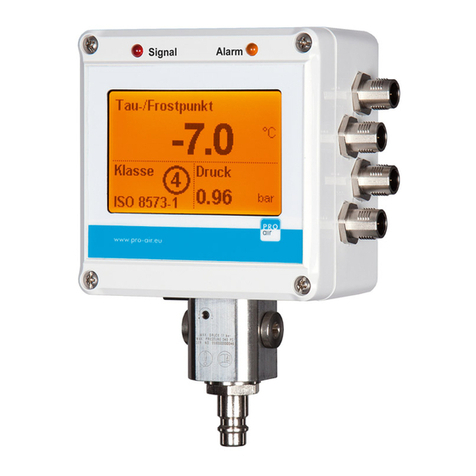
ProAir
ProAir TPK 21 LT Functional description and operating instructions

Micro Direct
Micro Direct MD SPIRO Micro MD6300 Instructions for use

Ono Sokki
Ono Sokki SE-2400 instruction manual

Ono Sokki
Ono Sokki DS-2000 Series Operation manual
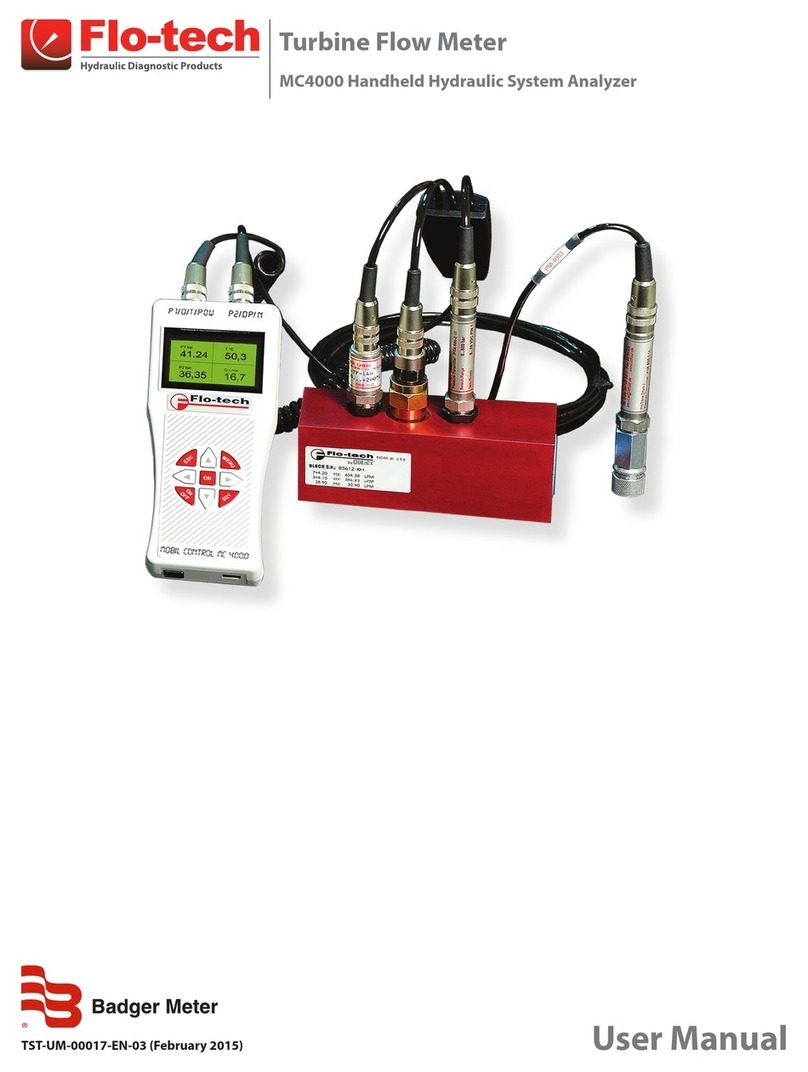
Flo-tech
Flo-tech mc4000 user manual

red lion
red lion PAXR0120 manual
